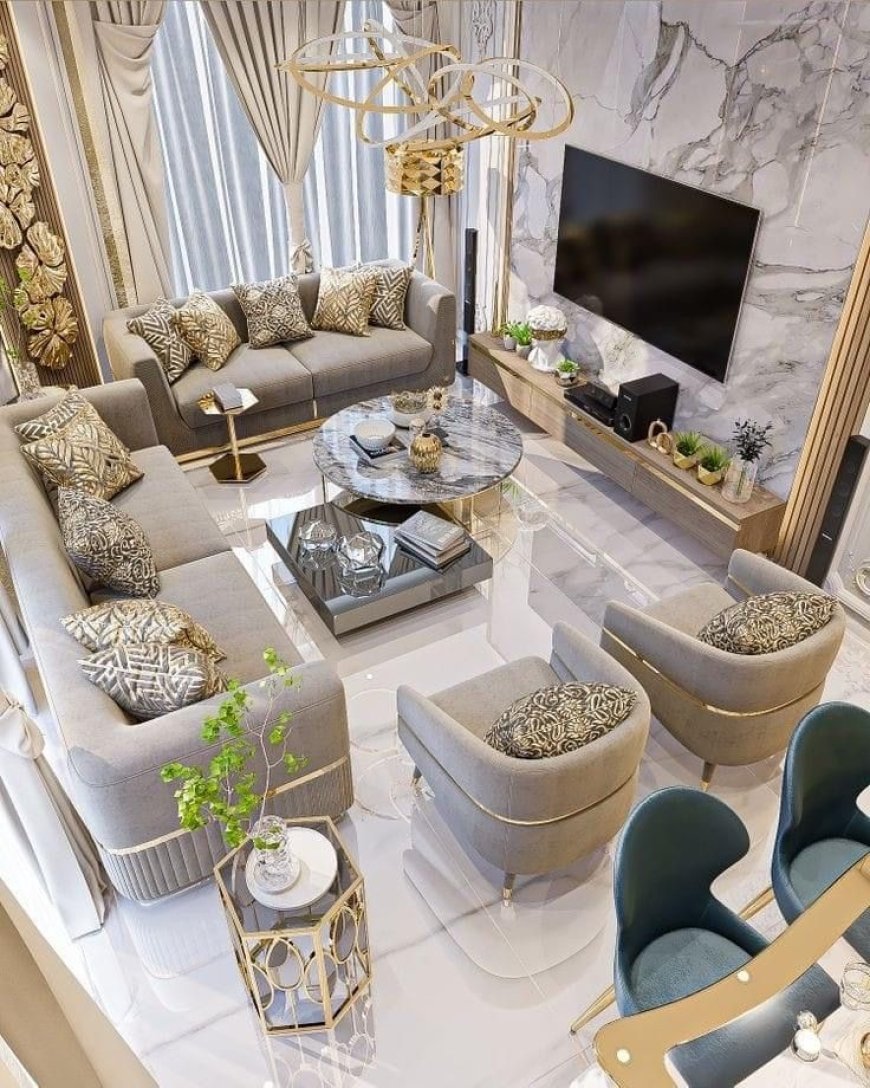Luxury Furniture and Cultural Influence: Blending Heritage with Modern Design

Luxury furniture has always been more than just functional pieces—it is a reflection of identity, heritage, and artistic expression. In Dubai, a city where modernity meets tradition, this interplay between cultural influence and contemporary design is especially evident. At Divine Decor, luxury furniture is not just about opulence; it tells a story, blending historical craftsmanship with innovative modern aesthetics.
The Role of Cultural Heritage in Luxury Furniture
Every region has a distinct artistic heritage that influences furniture design. Middle Eastern décor, for instance, is rich in geometric patterns, intricate carvings, and ornamental details. These design elements are not just decorative—they carry centuries of cultural significance and storytelling. When incorporated into modern luxury furniture, they create pieces that resonate with history while fitting seamlessly into contemporary homes.
Luxury furniture in Dubai often draws inspiration from Islamic art, which emphasizes symmetry, calligraphy, and intricate motifs. Artisans carefully translate these influences into furniture designs, ensuring that each item becomes a bridge between past and present. A carved wooden console, an inlaid coffee table, or an embroidered velvet armchair can subtly reflect centuries-old traditions while maintaining a modern, luxurious aesthetic.
Modern Design Meets Traditional Craftsmanship
While heritage inspires the design, modern sensibilities shape functionality and aesthetics. Dubai homeowners prefer furniture that is stylish, comfortable, and practical without compromising on luxury. This creates a fascinating dialogue between old and new: traditional craftsmanship techniques—such as hand-carving, marquetry, or intricate metalwork—are combined with modern materials like tempered glass, polished metals, and high-quality upholstery.
For example, a classic Arabic-inspired armchair may feature traditional geometric patterns embroidered into velvet cushions, yet its streamlined silhouette, ergonomic design, and modular functionality make it suitable for today’s contemporary living rooms. This thoughtful integration ensures that luxury furniture remains timeless, appealing to both connoisseurs of heritage and admirers of modern elegance.
Cultural Storytelling Through Material Choice
Materials themselves carry cultural connotations. Rich woods like walnut, oak, and teak have historically been prized for durability and beauty in Middle Eastern furniture-making traditions. Velvet and silk upholstery evoke regal luxury, reminiscent of historic palaces. Even metal finishes, such as gold or brass, often reference the opulence of traditional interiors.
By carefully selecting these materials, designers create furniture that communicates identity and heritage without overwhelming the modern aesthetic. At Divine Decor, the fusion of textures, colors, and finishes allows each piece to tell a story—connecting homeowners with a cultural legacy while enhancing the contemporary décor of their Dubai residences.
Luxury Furniture as a Cultural Statement
Investing in luxury furniture is also a reflection of lifestyle and personal values. In Dubai, where international influences converge with rich local traditions, choosing heritage-inspired luxury furniture demonstrates a respect for craftsmanship and history. These pieces are not mere décor items—they serve as cultural markers, expressing sophistication, taste, and awareness of artistic lineage.
Beyond aesthetics, luxury furniture shaped by cultural influence also enriches living spaces. A sofa adorned with traditional embroidery, a coffee table inlaid with geometric patterns, or a bedroom set featuring hand-carved details creates a sense of belonging and connection. These elements transform a house into a home, offering warmth, identity, and a unique personality.
The Future of Cultural Fusion in Luxury Furniture
As Dubai continues to grow as a global design hub, the blending of heritage and modernity in luxury furniture is likely to evolve further. Designers are experimenting with cross-cultural influences—combining Eastern patterns with Western minimalism, for instance—or introducing sustainable, innovative materials that honor tradition while addressing contemporary ecological concerns.
At Divine Decor, this vision is central. Every bespoke piece balances cultural authenticity with modern design sensibilities. From luxury living room sets to bedroom collections, the brand ensures that homeowners can enjoy furniture that is visually stunning, functional, and deeply meaningful.
Conclusion
Luxury furniture in Dubai today is a dialogue between the past and the present. By integrating cultural heritage into modern designs, brands like Divine Decor create spaces that are not only visually luxurious but also rich in meaning and identity. These pieces do more than furnish a home—they tell a story, preserve artistry, and elevate everyday living. In blending heritage with contemporary design, luxury furniture becomes timeless, offering elegance, comfort, and a tangible connection to culture.
What's Your Reaction?


























































